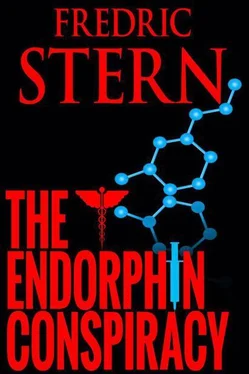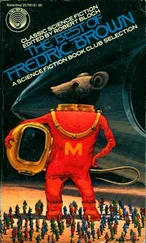Kapinsky had a photographic memory for minutia and could reference obscure journal articles and list differential diagnoses ad nausea . This behavior was nurtured by the system at an institution like the NYTC, but the bottom line was he was an horrendous surgeon, all thumbs in the operating room, even after six years of surgical training.
It wasn’t as if Geoff hadn’t tried to befriend him early on. Their first year working together Geoff had tried to loosen up Kapinsky’s tight-assed personality, taking him out on the town, to bars and nightclubs, even a foray to Geoff’s favorite Times Square strip joint—The Palomino—a place that would rouse a hard-on even with a eunuch like Kapinsky. But to no avail. For a while, Geoff had wondered if Kapinsky was gay, but he finally wrote him off as just an asexual bookworm with a fudgy nose.
Mark Jackson, the only black in the program, joined them, having finished his note on the patient in bed seventeen. Mark had a sharp mind and excellent surgical skills. He exuded a quiet confidence, not unlike Geoff in the early years of his residency.
“Well, Mark, it doesn’t look as though you got much sleep last night,” Geoff said.
“Sleep? What’s that? I spent yesterday afternoon in the OR with some poor junkie named Jose whose friend shot him in the face, last night with an unfortunate twenty-five year old hang-glider who got in the way of a telephone pole. This little girl with a head injury just came in. The good news is someone else is on call tonight.”
“Tell us about the hang-glider first,” said Geoff. He looked to his right, at the patient next door in bed seventeen. The man was tall, probably about six-two, muscular. A surgical dressing was wrapped around his ribs and upper torso. He had bruises around his eyes, and the lids were swollen shut. Sprouting from the top of his shaved head was a metal bolt with IV tubing connecting to a toaster-size box, on the front of which was a modulating digital readout. “By the looks of things, seems like he’s going to be off to the ward pretty soon.”
The team drifted next door and assembled around the hang-glider in bed seventeen. The medical students raised pens to clipboards, their attention focused on Mark Jackson.
“In a nutshell, John DeFranco is a twenty-five year old man who was in his usual state of good health until yesterday afternoon when he was hang-gliding up in Westchester County and caught a bad wind that sent him crashing into a utility pole. He was taken to Basset Hospital, where he was stabilized, then transferred here for observation. On admission, he was noted to be in a moderately deep coma due to a closed head injury. Amazingly, there was no spinal fracture or any other life-threatening injuries. Just a few broken ribs and a ruptured spleen.”
“What did his admission PET scan show?” asked Geoff.
“Moderate brain edema with a low level of endorphins in the brainstem.” Mark pointed to the intracranial pressure monitor next to the head of the bed. “His ICP has been hovering around fifteen all morning. That’s an improvement from yesterday. All in all, a decent prognosis,” said Mark.
“Then why is he still comatose?” asked Karen Choy.
“We have him snowed in a medically induced coma on phenobarbital to lessen his brain cells’ metabolic rate and need for oxygen. Once we drop the phenobarb level, he should wake up, hopefully by tomorrow.” Mark grasped the metal bolt protruding from the top of the patient’s head between his thumb and forefinger. “Then we can remove this ICP bolt and transfer him to the neuro ward where his rehabilitation can start.”
“Good job, Mark,” said Geoff. “Let’s hear about the new patient in bed eighteen.”
The team members regrouped around the little girl’s bed, Mark holding the clipboard, Geoff standing next to him near the head of the bed.
“This one’s not so rosy.” Mark cleared his throat. “I’m sure we’ll hear about this on the news tonight, if not sooner. Jessica Humphries, an eight-year-old girl, was in otherwise good health until she was taken hostage earlier today by a lunatic at the Central Park Zoo. He threatened to blow himself and the girl up. The grenade exploded ripping him to shreds—that’s all that remained of the guy according to Suzanne Gibson in pathology—and throwing Jessica twenty feet in the air. Unfortunately, she landed on her head.”
Geoff felt a pang of sadness. He studied the patient carefully. Her face was round and moon like, features swollen and distorted. Dark, bruised lids were taped tightly shut, and her lips were dry and cracked at the corners of her mouth where an airway tube had been taped to one side connecting her to the respirator that controlled her breathing. A patch of her fine, blood-crusted hair had been shaved on top for the ICP bolt, which had been inserted through the hole drilled in her skull, to monitor her intracranial pressure, as with the hang-glider in the next bed.
“What is the extent of her injuries?” asked Karen Choy.
“Her primary problem is the closed head injury,” replied Jackson. “Pupils are mid-position, but sluggishly reactive, eye movements spontaneous. She responds to localized painful stimulation, and over the last few hours seems to be attempting to make some sounds—”
“Sounds? You must be exhausted Mark,” interrupted Kapinsky, “this girl is deeply comatose.”
“What’s her coma scale rating, Mark?” asked Geoff. He fixed his gaze in Kapinsky’s direction.
“Nine out of fifteen, consistent with moderate head injury.”
“Hardly deep coma, Dr. Kapinsky,” Geoff said. “How has her intracranial pressure been, Mark?”
The group’s attention shifted to the ICP monitor and its ever-changing digital readout.
“Doing better now, twelve to thirteen. Was a bit high earlier. After some intravenous mannitol and hyperventilation, her ICP seems to have responded well. Brain swelling must be lessening.”
“Any other significant injuries?” asked Brian Phelps, briefly lifting his head out of his three by five cards.
“Collapsed right lung. The chest tube was placed by the general surgeons in the ER, and the lung seems to be re-expanding slowly. I repaired her scalp laceration. Spleen’s okay. No internal bleeding. A smattering of superficial shrapnel injuries, nothing too significant. Just the brain.”
Just the brain , thought Geoff. A biochemical mass the size and weight of a cantaloupe, the essence of what makes us uniquely human, the seat of our intellect, creativity, and emotions. Containing ten billion nerve cells, its labyrinthine pattern of axonal wiring and peculiar chemical balance of neurotransmitter substances were what distinguished an Einstein from a simpleton, a man of sound mind from a psychopath.
“Does that imply that if her brain swelling dissipates, she will come out of her coma?” asked one of the medical students.
“You’re assuming her nerve cells are only swollen, not permanently injured,” blurted Kapinsky. “Only thirty-eight percent of patients with her type of injury have a good recovery. Thirty-two percent have a moderate to severe permanent neurological or psychological deficit. Twenty-five percent die in the hospital.”
“Thank you, Professor Kapinsky,” said Geoff, no longer able to conceal his annoyance. “How about the PET scan results, Mark?”
“Her admission scan revealed a grade two out of five level of beta-endorphin flooding her brain’s receptors. Again, consistent with her coma, but with a fairly good prognosis.”
“That is, if you buy that PET scan endorphin data,” Kapinsky interrupted. “PET scanning is where CT scanning was thirty years ago—in its infancy with crude resolution and lacking standard means of interpretation. And endorphins, well, I don’t see how you can make any reliable statement regarding their relation to brain functions, let alone any clinical prognostication. The data is shaky, all conjecture. The only truly predictive model is Bayesian statistical analysis, utilizing the Glasgow Coma Scale, and according to this patient’s profile—”
Читать дальше












